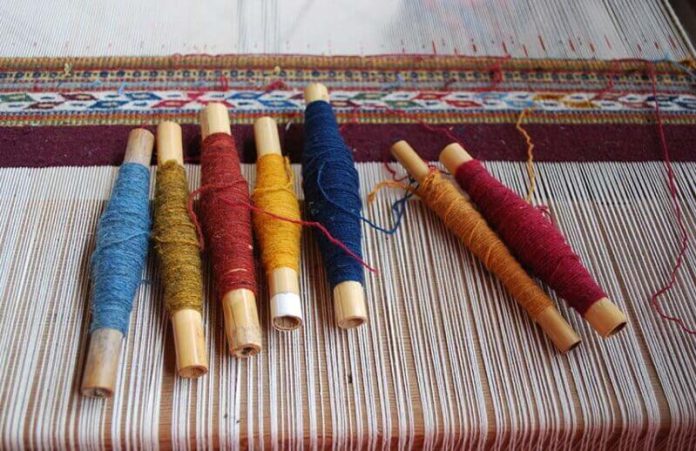As cauldrons boil on the open patio, Juana Gutiérrez creates visible magic as fibers, along with her hands, turn all kinds of beautiful colors. She is coloring yarn with dyes made naturally, a skill in danger of disappearing — but not if people like her have anything to say about it.
Until modern chemistry, all dyes came from natural sources. But artificial dyes are cheaper, easier to work with and longer-lasting. Their development is but one of several changes that have threatened or nearly eliminated many of the skills related to home textile production — from preparing fiber to the making of clothes. Even the wearing of traditional dress is waning for both economic reasons and the desire to be modern.
Today, clothing made “from scratch” is almost exclusively for special occasions or for sale.
The art of dyeing has been particularly hard hit by the march of technology because it involves a lot of work, and the effort is not quite as noticeable to the untrained eye as it is with hand weaving or embroidery. It also requires a significant amount of knowledge of both local raw materials and how to use them.
However, in the late 1980s, interest emerged in preserving and reviving natural dyes’ use in Mexico. Renowned anthropologist Marta Turok, Mexico’s leading authority on handcrafts, has fought in particular for the survival of Mexico’s “royal purple,” a color made for centuries by gently milking a type of sea snail that lives on the coast of Oaxaca and is called tishinda by the Mixtec.
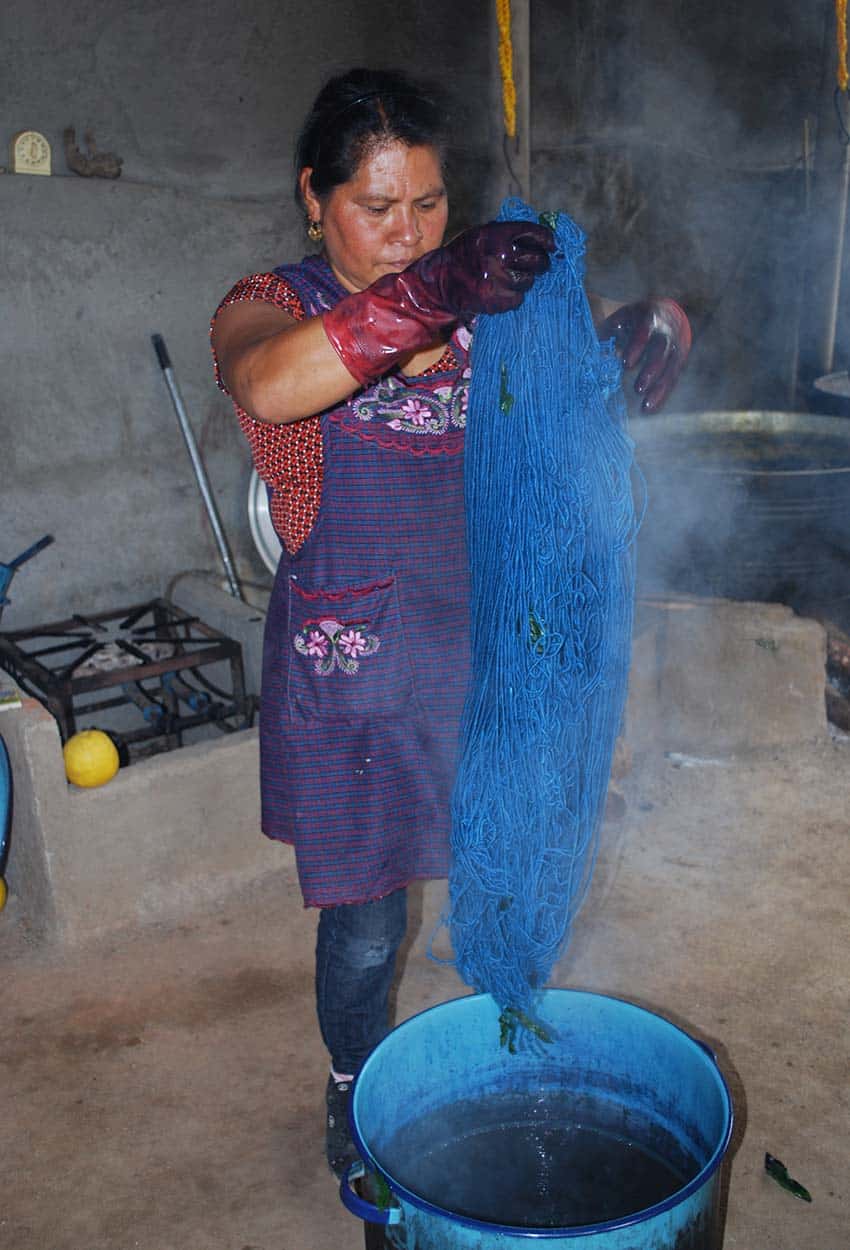
Such preservation is no easy task. So much information has already been lost, some of it only a few decades ago.
Clues to the craft remain in Mesoamerican codices, colonial-era documentation, historic garments and, when researchers are lucky, contact with the few (almost always women) who still do this work.
Research into these techniques, as well as their preservation, is a multidisciplinary field requiring everything from chemists to test clothing in archives to anthropologists who understand the cultures behind the dyes.
Most of Mexico’s natural-dye knowledge is located in the country’s south and center because of its abundance of flora and fauna there, as well as its history of complex civilizations. However, just about all of Mexico’s indigenous groups had at least some dyes available to them.
These dyes have come from three sources: wild plants and animals, cultivated and semi-cultivated ones, and earth minerals. Wild sources still provide the greatest variety, in multiple colors.
Fully cultivated sources include indigo — plants introduced by the Spanish — as well as the cochineal scale insect, famous for its ability to produce various shades of red. “Semi-cultivated” refers to the tishinda.
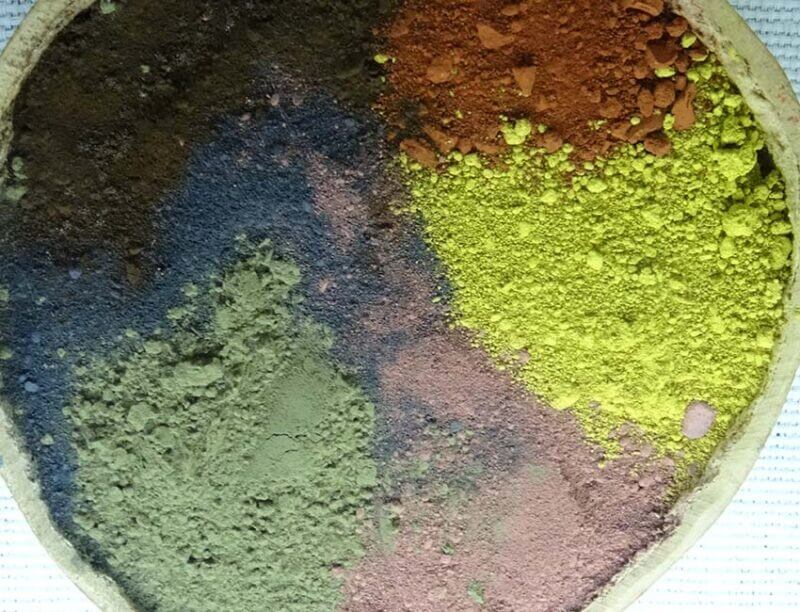
The snail, cochineal insect and indigo make Mexico’s three “spectacular” dyes, says Turok. All were highly prized both before and after the Conquest — shipped back to Europe along with silver and gold.
Over the centuries, cochineal and indigo became fully cultivated. The tishinda snails that produce the purple dye are now milked seasonally under strict guidelines. All three colors are produced in Oaxaca on the state’s Mixtec coast and can be used in combination there.
Cochineal is the best known — cultivated and used primarily in and around the city of Oaxaca. The insect feeds on the nopal cactus, which grows over most of central and southern Mexico, but cochineal seems to be picky about where it lives; there were attempts to cultivate it in other states but to no avail.
Commercial production has been problematic. Although native to Mexico, the insect has predators here that it does not in places like Peru and Chile, and so it is also cultivated there.
Indigo was already known to the Europeans before the Conquest because other varieties of the plant grow elsewhere in the world. Nonetheless, the Mexican variety became an important colonial commodity, with cultivation extending from what is now Guatemala to far up Mexico’s west coast. Today, it is grown only in a few communities in Oaxaca and is at the point of disappearing even here.
The purple dye produced by the tishinda is exceedingly difficult to produce and keep from fading.
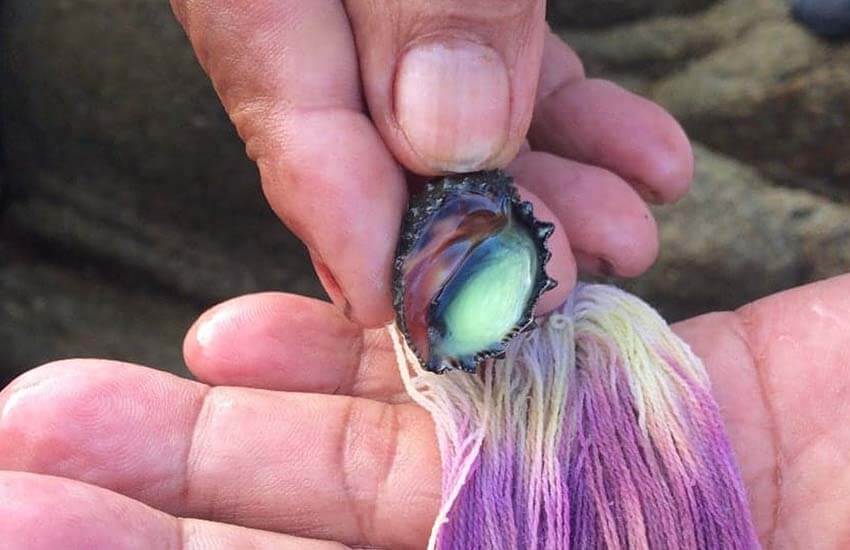
Mexico’s snails produce a liquid that when applied directly onto cloth will self-affix and self-cure; no other process is needed. Unlike in the Mediterranean, the Mexican snail was not killed to extract the liquid but rather pressed onto the cloth then returned back to the tidal zone from which it came.
The best way to get an appreciation for natural dyes is to visit those who have preserved the materials and techniques. Recommended is the Gutiérrez family workshop in Teotitlán del Valle, Oaxaca, famous for the weaving of naturally-dyed wool rugs.
Unfortunately, natural does not necessarily mean sustainable.
The main problem is overexploitation, especially of wild plants. Many resource collection practices have developed with sustainability in mind, such as letting plants release their seeds before harvesting.
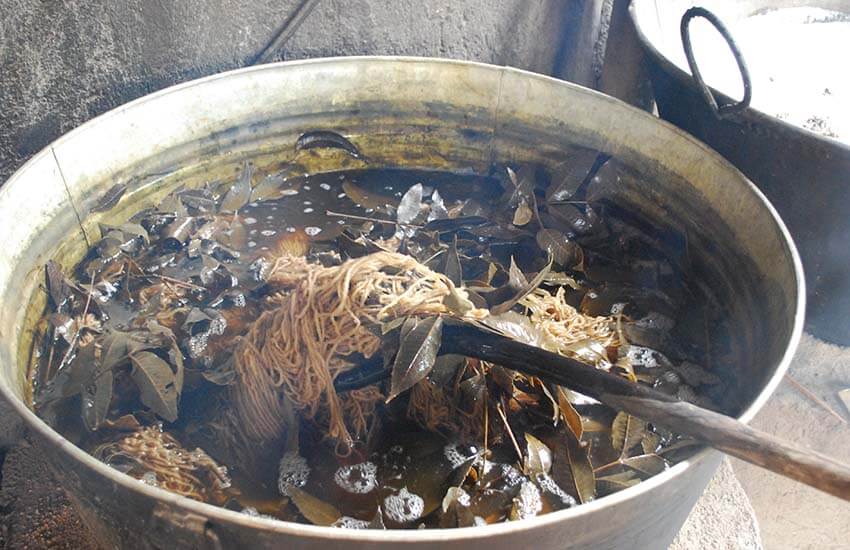
However, it is unknown if such practices are sufficient with rising demand. In addition, says Turok, when there is economic pressure, such practices “can become sloppy.”
The resource in the greatest danger is the tishinda. For centuries, the Mixtec migrated to the Oaxaca coast at a certain time of year to milk the snails, taking care not to kill them or interfere in their reproductive cycles. However, recent developments have put major pressure on the snails.
In the 1980s, a Japanese company, Imperial Purple, Inc., paid local (non-Mixtec) fishermen to gather them indiscriminately for use in dyeing high-end textiles in Japan. To this day, you will not see snails over a certain size because of the damage this did. It triggered laws protecting the tishinda, but their effectiveness is disputable. Encroachment on the snails’ habitat and poaching are the main threats today.
Turok and others have worked to understand the snail’s life cycle with the aim of full cultivation, but this has not yet panned out. They have also filed lawsuits to get current laws better enforced.
Leigh Thelmadatter arrived in Mexico 18 years ago and fell in love with the land and the culture in particular its handcrafts and art. She is the author of Mexican Cartonería: Paper, Paste and Fiesta (Schiffer 2019). Her culture column appears regularly on Mexico News Daily.
